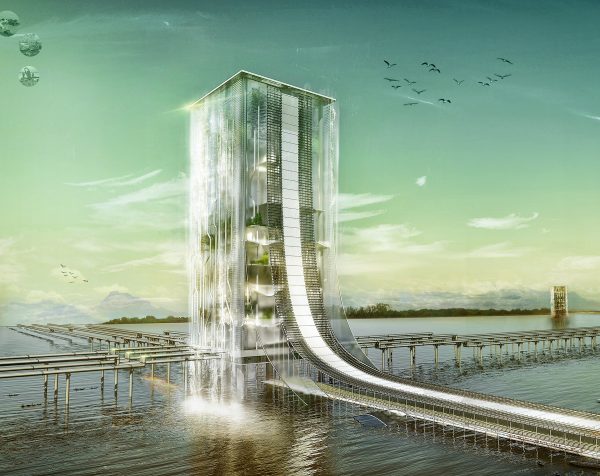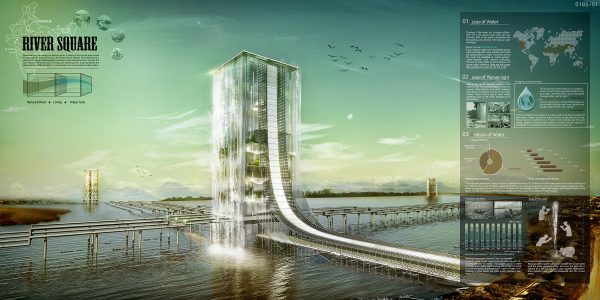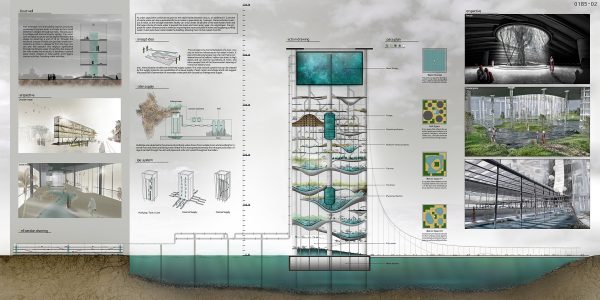Honorable Mention
2018 Skyscraper Competition
Kang Tae Hwan, Kim Min Jeong, Yun Seo Jun, Lee Se Won
South Korea

Have you ever thought about a life without water? If you think of the forest desertification image that you saw through YouTube, you can see little impact of water on human life. It is not well known that when water is not available, it contravenes water human rights, such as discrimination and a threat to safety, and can’t escape from poverty. In particular, water is more than just a drink in India. Every Indian loves their river, crossing over the religions and languages of the times. Before daybreak, Hindus take a bath and pray in the nearby river, they wash themselves with bronze water bottles as a religious ceremony. When religious festivals are held, tens of millions of people in the city are bring together.
Despite efforts to solve the water system, which is based on international and India domestic law, India’s water demand appears to have failed to meet the demand. As urban population continues to grow with the rapid industrialization, additional 1.5 percent of waste water per day for each increasing in population has been made. Water pollution is serious in India, as the sewage treatment facility can only handle 30 percent of the total waste water and the huge volume of waste water is poured into rivers every year. Furthermore, the long lasting culture in India has accelerated river pollution.
Therefore, we propose skyscrapers, including rivers, which are considered sacred to Indians as a way to build a water infrastructure in India. Indians can see rivers in high places and feel a hierarchy of rivers, and other people think of the Monumental meaning of rivers that Indians have. This demonstrates the potential of skyscrapers as an Indian infrastructure. The building cleans water came from the outside, fills in water from inside, and provides drinking water outside gradually. Water transported externally to each village is transferred via the units, and pipes and units form a wide network throughout the country. Ultimately, the project aims to increase the Indian’s water rights through water infrastructure.


This work is licensed under a Creative Commons License permitting non-commercial sharing with attribution. https://creativecommons.org/licenses/by-nc-nd/4.0/



